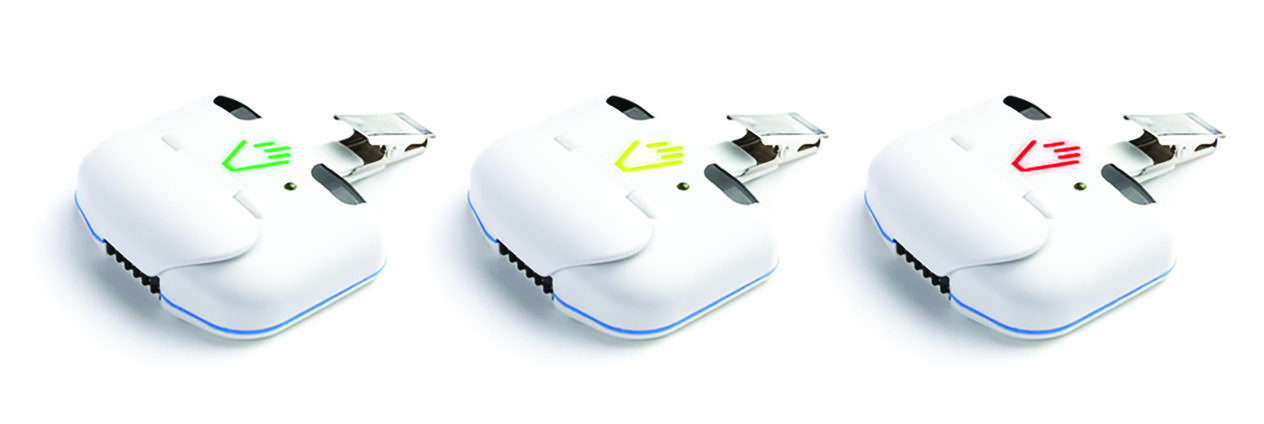The Role of Digital Hand Hygiene Monitoring in Meeting Leapfrog Requirements
Providing quality healthcare is complex. Poor care – often caused by staff shortages and poor hygiene habits – can put patients at risk and damage a hospital’s reputation in the community. Yet these same hospitals are often working with limited budgets and a shortage of manual labor, making it difficult to find solutions that help improve quality of care in a cost-effective way.
For example, hand hygiene monitoring and audits are critical to reducing healthcare-associated infections (HAIs) and collecting data for the Leapfrog Hospital Safety Grade, but manual methods are costly and prone to error.
For a positive return on investment, more and more senior leaders in healthcare are purchasing an electronic hand hygiene audit tool to consistently and accurately collect and analyze data. These evidence-based solutions make it easier for hospitals to improve patient safety and meet Leapfrog guidelines by conducting observations electronically, collecting and compiling data, and providing insights that can drive improvement.
What is the Leapfrog Hospital Safety Grade and why is it important to hospitals?
According to the Leapfrog Group, “The Leapfrog Hospital Safety Grade is the only hospital rating focused exclusively on hospital safety. Its A, B, C, D or F letter grades are a quick way for consumers to choose the safest hospital to seek care.” The data is used by health plans, transparency vendors, and employers to identify the safest hospitals and help their audiences make more informed decisions about their care.
A high Leapfrog Hospital Safety Grade could help hospitals attract new patients, while a low score could deter them and lower confidence in the hospital’s ability to provide care safely. Patients at “D” and “F” hospitals, for example, face a 92% greater risk of avoidable death. Better safety grades speaks to a hospital’s positive reputation in the community.
How is the Leapfrog Hospital Safety Grade calculated?
The Leapfrog Hospital Safety Grade is calculated using a number of factors. According to The Leapfrog Group, the grade methodology is peer reviewed and “uses up to 28 national performance measures from the Centers for Medicare & Medicaid Services (CMS), the Leapfrog Hospital Survey and information from other supplemental data sources.”
Hospitals can also submit additional safety data through the Leapfrog Hospital Survey and help provide a more complete picture of patient safety at their facility.
Hand hygiene monitoring and Leapfrog compliance
Hand washing is rated under “Preventing and Responding to Patient Harm” since it is the cornerstone of infection prevention and patient safety. Hand hygiene best practices fall into five different domains, with one being “monitoring, including assessing compliance with hand hygiene technique.”
Because of this, hospitals that wish to be Leapfrog compliant must make sure they are conducting enough observations per year and collecting accurate data about hand hygiene compliance.
Leapfrog requires approximately 20,000 observations per year, which can be a challenge for hospitals to conduct, especially when performing this task manually. The process of collecting and compiling data can be time-intensive, and manual audits are flawed and prone to human error.
Electronic solutions save time and money for hospitals while exponentially increasing the amount and accuracy of hand hygiene compliance data. A 200-bed hospital might conduct 1,000-2,000 direct observations/year, which is far below Leapfrog’s observation requirements.
Benefits of using a hand hygiene audit tool
An electronic hand hygiene monitoring system can help bridge this gap while also being more cost-effective than manual efforts.
With BioVigil, captured hand hygiene events can increase to 18,000 a day or 6.5M events a year. The cost of manual audits, data entry, and analysis required to meet Leapfrog requirements can easily pay for an electronic hand hygiene monitoring system.
In fact, manual labor for 200 units per month will more than pay for BioVigil. And unlike manual labor, an electronic hand hygiene audit tool will behave the same at all hours of the day.
BioVigil provides a gentle reminder sequence on a user-worn badge to perform hand hygiene. That compliance data is gathered in a configurable dashboard that color-codes insights and is available in easy to read graphs, making it simple for hospitals to gather and submit data on hand hygiene monitoring and compliance.
In addition to reporting on hand hygiene compliance, a hand hygiene audit tool like BioVigil can help reduce HAIs, which is another Leapfrog Hospital Survey measure. Outbreaks of these infections can significantly add to healthcare costs, so it is in a hospital’s best interest to keep these numbers as low as possible; according to Becker’s Hospital Review, for example, one HAI can cost hospitals between $42,000-$60,000 per patient.
Because proper hand hygiene is one of the most important factors in preventing C. diff and other common infections such as CAUTI and CLABSI, BioVigil’s hand hygiene reminders and data-driven insights can help significantly lower these incidents. An article by the American Journal of Infection Control found that BioVigil reduces HAIs by up to 83%, including a 45%+ reduction in CLABSI and CAUTI.
Learn how an electronic hand hygiene audit tool can help you meet Leapfrog guidelines
Need help meeting Leapfrog guidelines? Request a demo of our electronic hand hygiene monitoring system to learn more.

